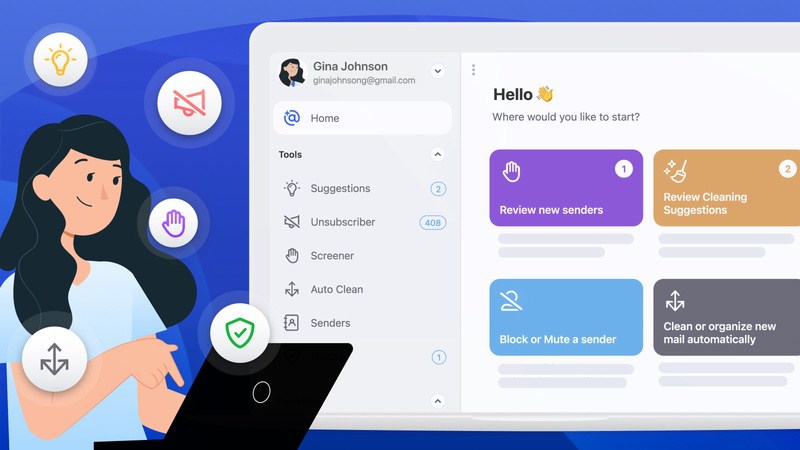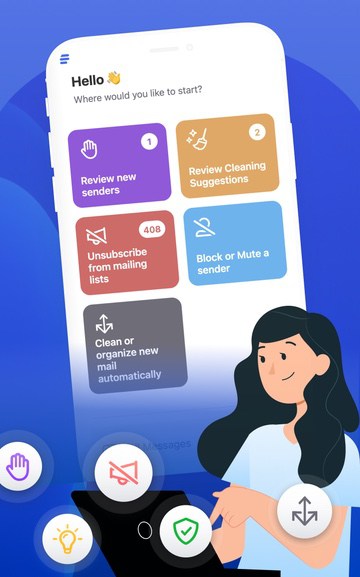How to Write a Professional Email in 6 Steps
Learning how to write a professional email is not as easy as it sounds. In fact, many people have a hard time differentiating between the type of language they should use in a professional email and the lingo they use while texting their friends. Unfortunately, you don’t want to communicate with a boss or potential client in the way you talk to your best friend, which is why it’s important to learn how to write a professional message.
If you aren’t sure where to start, these six steps will give you a clear outline for your next company email or other type of professional message.
1. Create A Clear, Professional Subject Line
Subject lines are often an overlooked part of electronic communication. However, a good subject line is essential for any professional email for business or personal purposes.
In a professional message, your subject line should clearly convey the purpose of your email in as few words as possible. For example, if you are writing an interview follow-up email, you will want a subject line that includes the position you interviewed for and other relevant details, like the date of your interview. Similarly, if you are sending a request to a colleague for a reference letter or recommendation, you can write a simple subject line like, “Reference Request — [Name].”
2. Start With a Greeting
The greeting is another part of professional email writing that often gets left in the dust, but it is just as important as the body of the message. However, a professional greeting can start the message on the right foot. In many cases, professional greetings are almost like an electronic form of respect and admiration, which makes them necessary for any message for business or personal purposes.
When selecting a salutation for your email, make sure you consider your relationship with this person. If it’s someone you don’t know well, using their surname is recommended. If you aren’t sure how to address them, using terms like sir or madam are a safe alternative. Also, unless you have an established relationship with the person, stick to greetings that include terms like “Dear,” “Good morning,” or similar.
3. Offer Pleasantries or Thanks
Once the greeting is out of the way, it’s time to start the body of the message. However, you will want to start the message off on a positive note before diving into business. For this, a simple thank you or other sort of pleasantry works well. If it’s been a while since you’ve spoken to this person, you can also use this intro as an opportunity to refresh their memory.
Some examples include:
- Thank you for taking the time to read my email.
- I greatly enjoyed speaking with you [insert details].
- Thank you for reaching out.
4. Explain Your Purpose
The bulk of any professional email for business or personal purposes is the information regarding the purpose of the message. In this section, you will explain why you contacted the person and share what you need from them in return (if anything). However, be sure to keep this as brief as possible since many people are busy and have lots of messages to get through in a short amount of time.
5. Wrap Things Up
Many people don’t understand how to end an electronic message. However, it’s really not that hard once you get the process down. In most cases, your message should end in one with three ways.
- Call to Action: If you need the recipient to follow-up or do something after reading your message, ending the email with a call to action can be helpful. You can even include a deadline or timeline for the task you’ve asked them to do.
- A Summary: If your email is fairly long, it may help if you include a short summary at the end that highlights the main points. People often appreciate this so they don’t have to reread the entire message.
- Appreciation: If you don’t need to include a call to action or summary, you can simply end the message with a quick “thank you” or other form of appreciation.
6. Include A Professional Sign Off
Finally, you should end any professional email for business or personal purposes with a Professional email signature. You should include a professional sounding sign off like “Thank you,” or “Sincerely,” or do something more specific to the contents of the message. If the message is for business purposes, you can also add a CTA email signature to encourage your recipient to take action.
How To Write a Professional Email Best Practices
The structure of your message is very important when writing a professional email. However, there are also some best practices that come into play with this form of electronic communication that you will also need to learn if you want to send the best possible emails to your colleagues or other professional connections.
Here are some of the best practices you’ll want to master so you know how to write a professional email.
Use A Professional Email Address
First and foremost, you should always send a professional email for business from a professional email address. Professional addresses establish trust and show you take your electronic communication seriously. Usually, these email addresses include the business name you’re representing or some version of your name without nicknames or random words.
Know Your Audience
This may sound like a no-brainer, but it’s a best practice people often overlook. Even within the realm of professional emails, there are some nuances that only work with specific audiences. For example, you may use a different tone or include jokes in a message to a coworker, whereas you would refrain from that if you’re trying to close a sale. Knowing your audience will help you with syntax, formatting, and other components of your message.
Maintain A Positive Tone
When sending professional messages, you want to maintain a professional, but positive tone. If you aren’t careful about your word choices, it’s easy to let frustrations or stress seep into electronic communication. Therefore, it’s important to choose your words carefully and add embellishments that make the message come across as polite and diplomatic, regardless of the reason you’re sending it.
Keep Your Message Brief
Everyone is busy, which means most people don’t have time to read your novella of an email, no matter how well it’s crafted. So, try to keep your message as brief as possible, even if that means revising the email or including an attachment with additional details.
Format The Email Well
Let’s be real: we all skim emails from time to time. Therefore, it’s important to master proper formatting when typing up a message. You can use bold for important statements or dates, place listed items in bullet points, and separate different parts of your message into paragraphs. All of this will make your email easy to read so your recipients understand your words.
Proofread Before You Send
When you are sending a professional message of any type, the last thing you want is a glaring typo or links that do not work. So, before you press send, make sure you give the email a thorough read-through to check for clarity, errors, and missing information.
Professional Email Example
Subject: Meeting Reminder — Tuesday, 10:00am
Dear [Name],
Happy Monday! I hope this email finds you well.
I just wanted to remind you of our upcoming meeting about the new website. It is scheduled for tomorrow morning at 10:00am CST and should last around one hour. You can look through the meeting agenda here and add anything you would like to address.
Please let me know if you have any questions. I’m looking forward to connecting with you regarding this project.
Thanks again,
[First Last Name]
name@email.com
name.com
123-456-7890
Keep Your Inbox Looking Professional Too With Clean Email
Although Clean Email isn't an email client that helps you send professional messages, it is an inbox management tool that helps you maintain a clean, professional mailbox.


In fact, Clean Email is packed with features to help you sort messages, remove clutter, and even automate inbox management tasks. All of this saves you time and helps you keep track of messages so you don't miss out on anything.
Some of Clean Email's standout features include:
- Screener, a feature that places messages from unknown senders in a quarantine folder instead of your inbox.
- Unsubscriber, a feature that removes you from promotional messages you do not want to receive.
- Senders, a feature that automatically clears messages when they hit your inbox based on addresses you've flagged.
- Auto Clean, a feature that helps you create automation rules based on your needs.
Whether you're trying to land a promotion or just communicating with colleagues, Clean Email is here to help you maintain a squeaky clean inbox so you can write and receive important messages without any issues.
How To Write A Professional Email - FAQs
What is a Professional Email?
A professional email is one that pertains to business or personal matters of a professional nature. These could be communications with a colleague, doctor, or other working professionals you need to conduct some form of business with.
Where can I find more professional email examples?
There are many posts on the internet with examples of professional messages for various circumstances. You can also check this site for more options.


